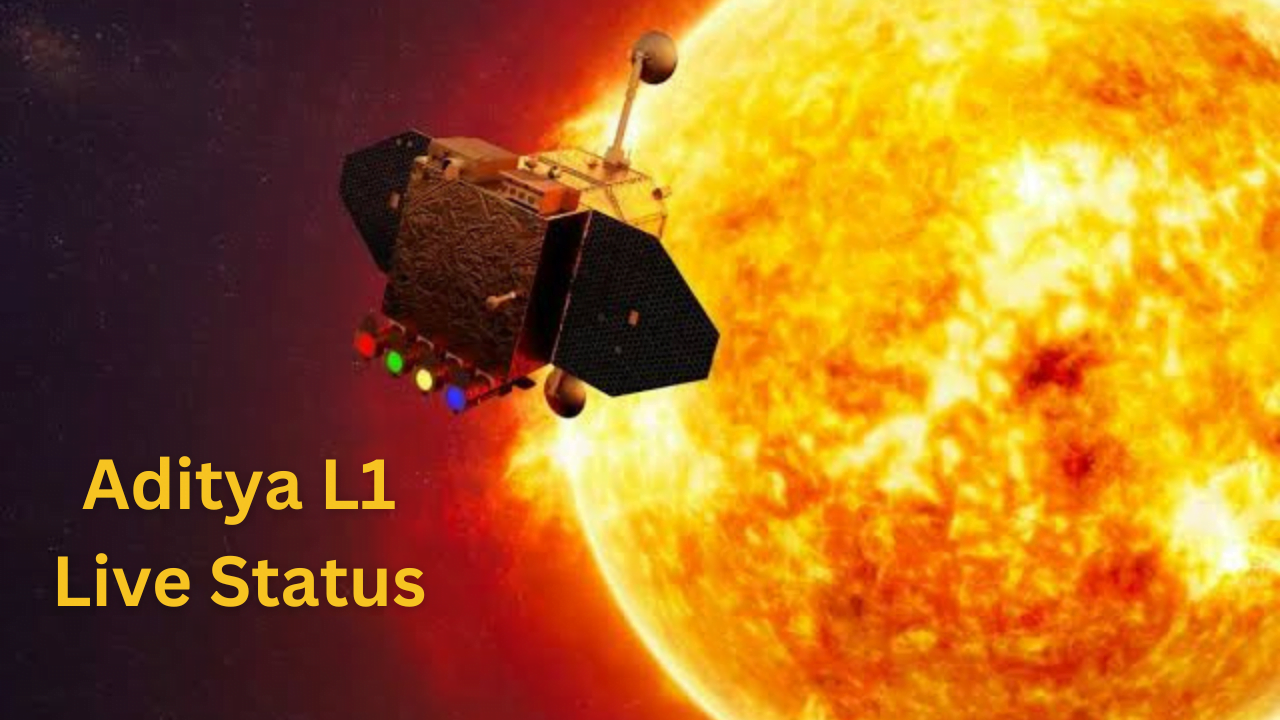In this article, we discuss, Aditya L1 status and Live tracking and location of Aditya L1. As we all know Aditya L1 was launched on 2nd September 2023 and it is expected to reach its destination on 7th January 2024. We will cover all the updates of the Aditya L1 mission from its launch to its destination and its operations, So stay in orbit of Aditya L1.
Aditya L1 is India’s first mission to study the Sun and its orbit is the Lagrange point (L1) of the halo orbit around the Sun-Earth system which is approximately 1.5 million km from the Earth.
The main objectives of Aditya L1 are
(1) Study the Upper atmospheric layer (chromosphere and corona) of the sun.
(2) Understand the mechanism of the solar and heating process
(3) Understand space weather, origin, composition, and solar wind dynamics
Aditya L1 Payloads
Aditya L1 payloads are of two types one is remote sensing payload and 2nd is in-situ payload ( on-site observation of L1 point).
Read more details of payloads and objectives on Aditya L1: India’s 1st mission to Sun
Aditya L1 status: Live tracking and location of Aditya L1
The Aditya L1 Launch (02 September 2023)
ISRO ( Indian Space Research Organisation ) launched Aditya L1 on 2nd September 2023 at 11:50 Hrs IST from Satish Dhawan Space Centre, Shri Harikota by PSLV (Polar Satellite Launch Vehicle ) XL/ PSLV C56.
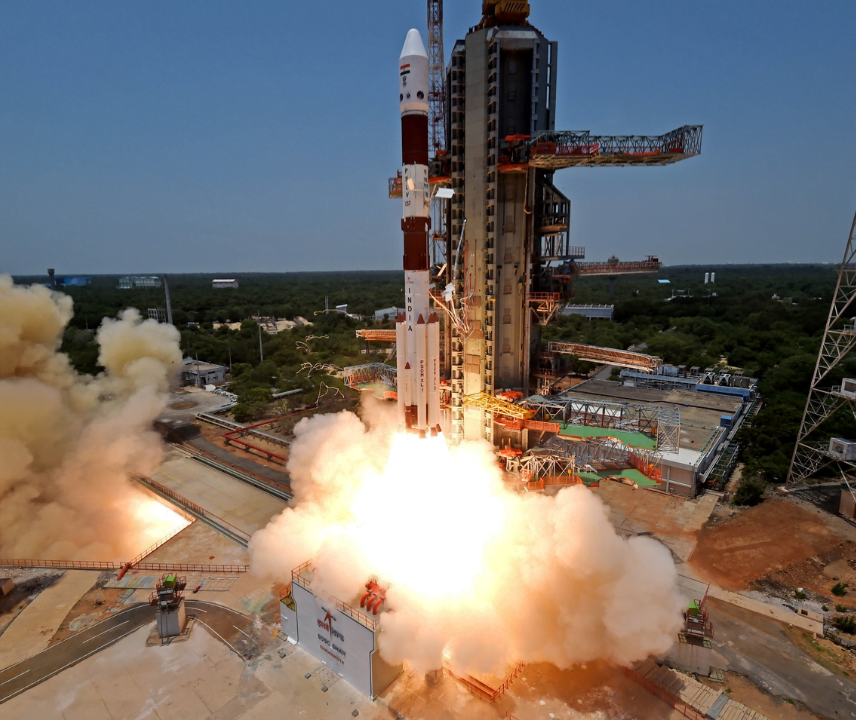
After the successful launch, PSLV placed the Aditya L1 spacecraft precisely into its orbit and India’s first solar observatory started its journey to the destination L1.
Read also Chandrayaan 3 status: Live tracking and Location
1st Earth-bound- Maneuver ( 03 September 2023)
Aditya L1 status: The 1st Earth-bound maneuver (EBN#1) was performed on 3 September 2023 around 11:40 Hrs IST from ISTRAC, Bengaluru, and the orbit attained by the spacecraft is 245km x 22459 km, and the next maneuver (EBN #2) is scheduled on 5 September 2023 around 03:00 Hrs IST.
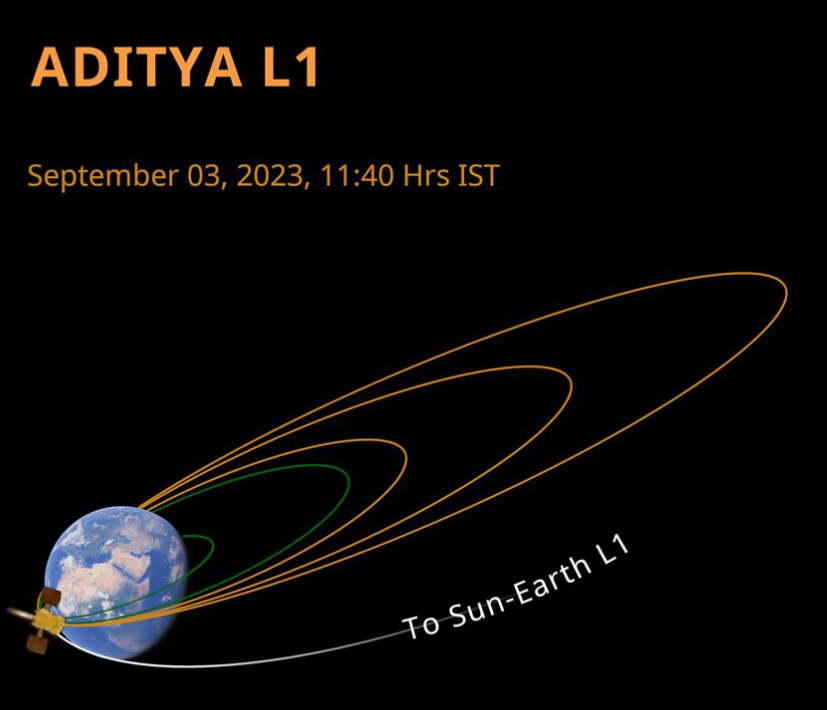
2nd Earth-bound Maneuver (05 September 2023)
Live tracking and location of Aditya L1: The second Earth-bound maneuver (EBN#2) was performed on 05 September 2023 at 02:45 Hrs IST from ISTRAC, Bengaluru, and the spacecraft attained a new orbit of 282 km x 40225 km. The next maneuver (EBN#3) is planned on 10 September 2023 around 02:30 Hrs IST.
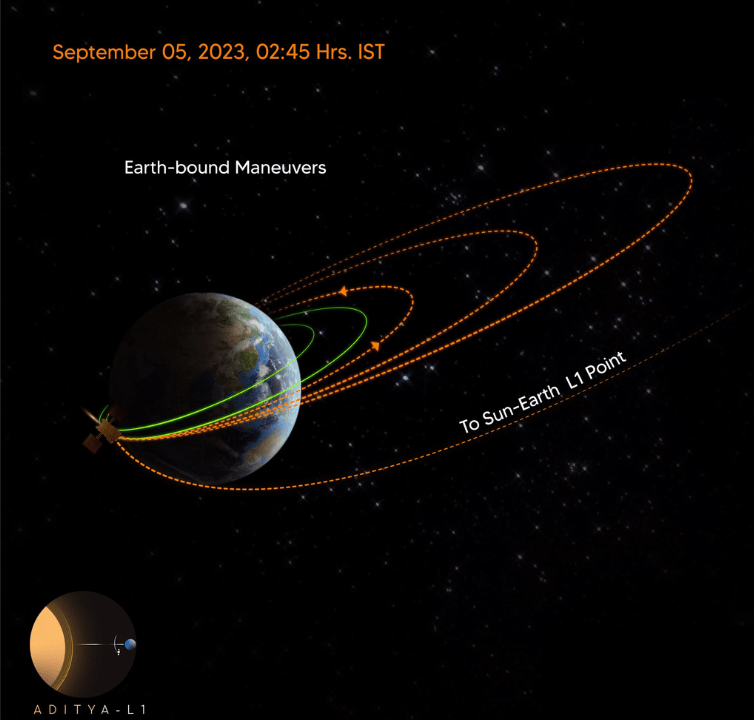
3rd Earth-bound Maneuver (10 September 2023)
Aditya L1 status: 3rd Earth-bound maneuver (EBN#3) was performed successfully on 10 September 2023 around 02:30 Hrs IST from ISTRAC, Bengaluru, and the spacecraft was placed into a new orbit of 296 km x 71767 km. The 4th maneuver (EBN#4) is scheduled for 15 September 2023 around 02:00 Hrs IST.
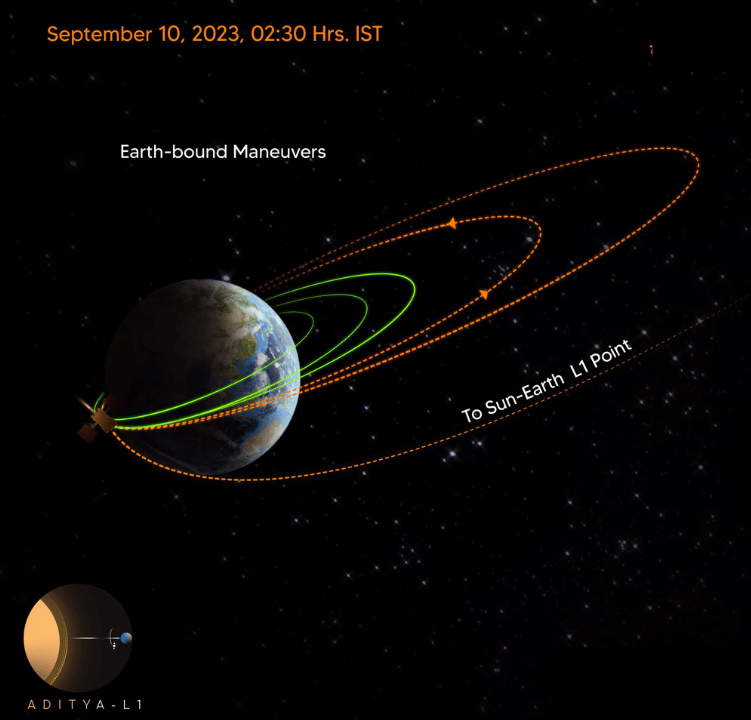
Read also NGLV: Next Generation Rocket for India’s Space Station by 2035
4th Earth-bound Maneuver (15 September 2023)
Live tracking and location of Aditya L1: 4th Earth-bound maneuver (EBN#4) was performed successfully on 15 September 2023 around 02:15 Hrs IST from ISRO’s ISTRAC, Bengaluru, and Aditya L1 spacecraft entered into a new orbit of 256 km x 121973 km.
The upcoming maneuver Trans-Lagragean Point 1 Insertion ( TL1 I) – a departure from Earth– is planned on 19 September 2023 around 02:00 Hrs IST.
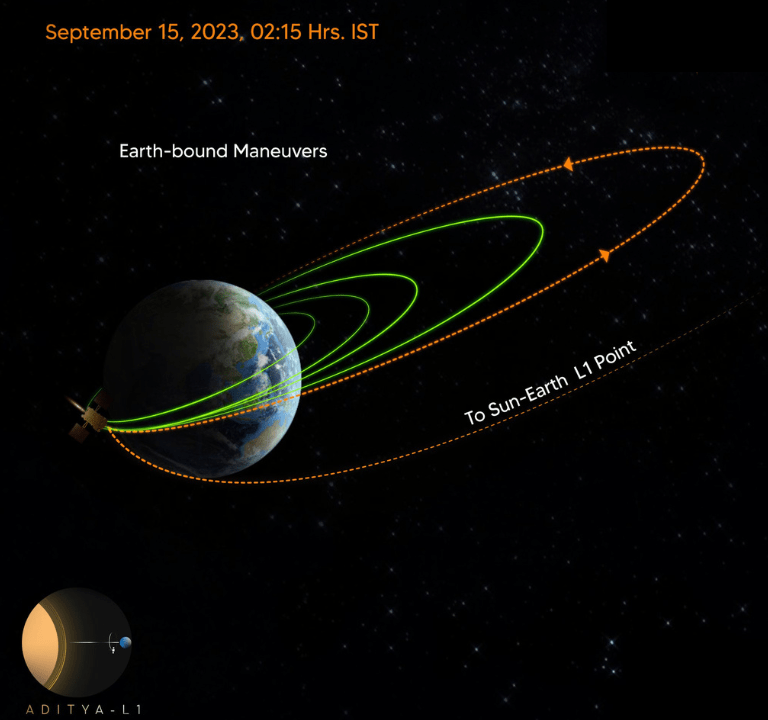
Aditya L1 started collecting data (18 September 2023)
Aditya L1 status: The collection of scientific data has commenced for the Supra Thermal & Energetic Particle Spectrometer (STEPS) instrument, which is a component of the Aditya Solar Wind Particle Experiment (ASPEX) payload.
STEPS utilizes six omnidirectional sensors to measure supra-thermal and energetic ions with energies ranging from 20 keV/nucleon to 5 MeV/nucleon, and electrons exceeding 1 MeV. This comprehensive particle analysis allows for a detailed understanding of the space environment.
STEPS was activated on September 10, 2023, at a distance exceeding 50,000 km from Earth, STEPS was positioned well beyond the Earth’s radiation belt region, equivalent to over 8 times the Earth’s radius. After following essential instrument health checks, the collection of data continued until the spacecraft had traveled beyond the 50,000 km mark from Earth.
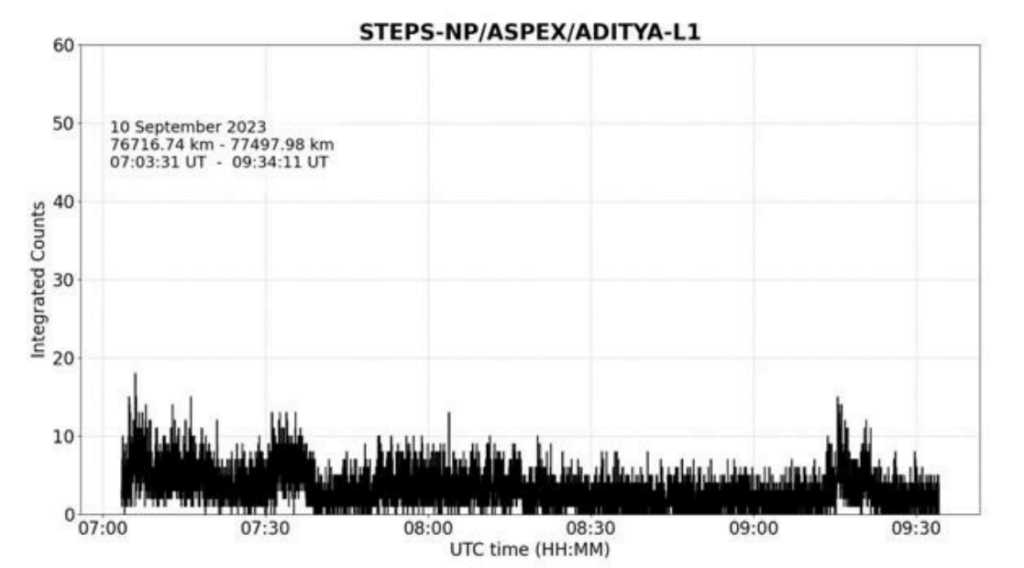
TL1 I maneuver (19 September 2023)
Live tracking and location of Aditya L1: Trans-Lagragean Point 1 Insertion ( TL1 I) maneuver performed successfully on 19 September 2023 around 02:00 Hrs IST from ISRO’s ISTRAC, Bengaluru.
The Aditya L1 spacecraft is currently following a trajectory destined for the Sun-Earth L1 point, where it will undergo a maneuver approximately 110 days from now to be injected into orbit around L1.
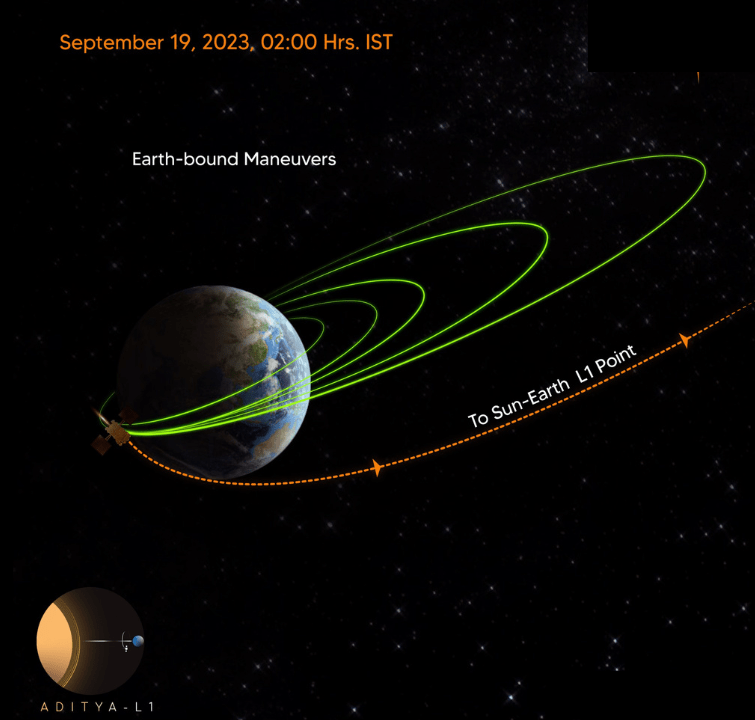
Aditya L1 escapes the sphere of Earth’s influence (30 September 2023)
Live tracking and location of Aditya L1: The spacecraft has surpassed a distance of 920,000 kilometers from Earth, effectively breaking free from Earth’s gravitational influence. It is currently charting its course towards Lagrange Point 1 (L1), situated between the Sun and Earth.
Trajectory Correction Maneuver (TCM) ( 8 October 2023 )
Live tracking and location of Aditya L1: A planned Trajectory Correction Maneuver (TCM) was successfully executed on October 6, 2023, for approximately 16 seconds. This maneuver was deemed necessary to refine the spacecraft’s trajectory following an evaluation of the Trans-Lagrangean Point 1 Insertion (TL1I) maneuver performed on September 19, 2023.
TCM serves as a precise navigational tool, ensuring the spacecraft remains on the designated path toward the Halo orbit insertion around L1.
HEL1OS captures High-Energy X-rays of Solar Flares (7 November 2023)
Aditya L1 status: The HEL1OS (High Energy L1 Orbiting X-ray Spectrometer ) instrument onboard Aditya-L1 has successfully detected the intense X-ray emission associated with the impulsive phase of a solar flare.
The HEL1OS is equipped to continuously monitor the Sun’s high-energy X-ray activity, providing high-resolution spectra and rapid observations.
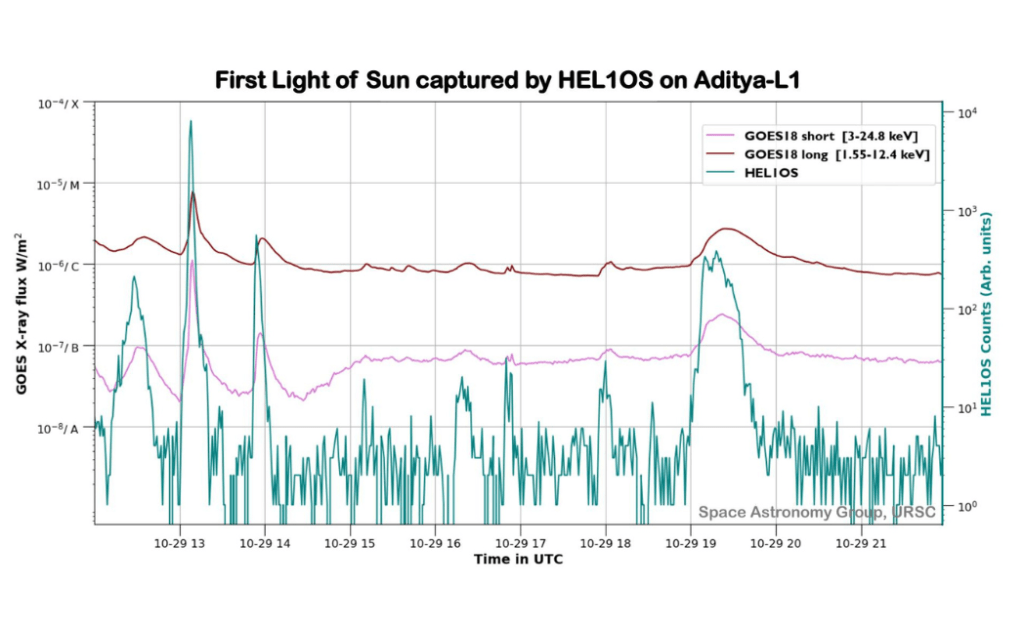
Solar Wind Ion Spectrometer (SWIS) is operational now (26 November 2023)
Aditya L1 status: The Aditya Solar Wind Particle Experiment (ASPEX) payload has successfully activated its second instrument, the Solar Wind Ion Spectrometer (SWIS).
ASPEX consists of two state-of-the-art instruments: the Solar Wind Ion Spectrometer (SWIS) and STEPS (SupraThermal and Energetic Particle Spectrometer). STEPS became operational on September 10, 2023. Subsequently, the SWIS instrument was activated on November 2, 2023, and has demonstrated excellent performance since then, But these data share by ISRO on 1 December 2023.
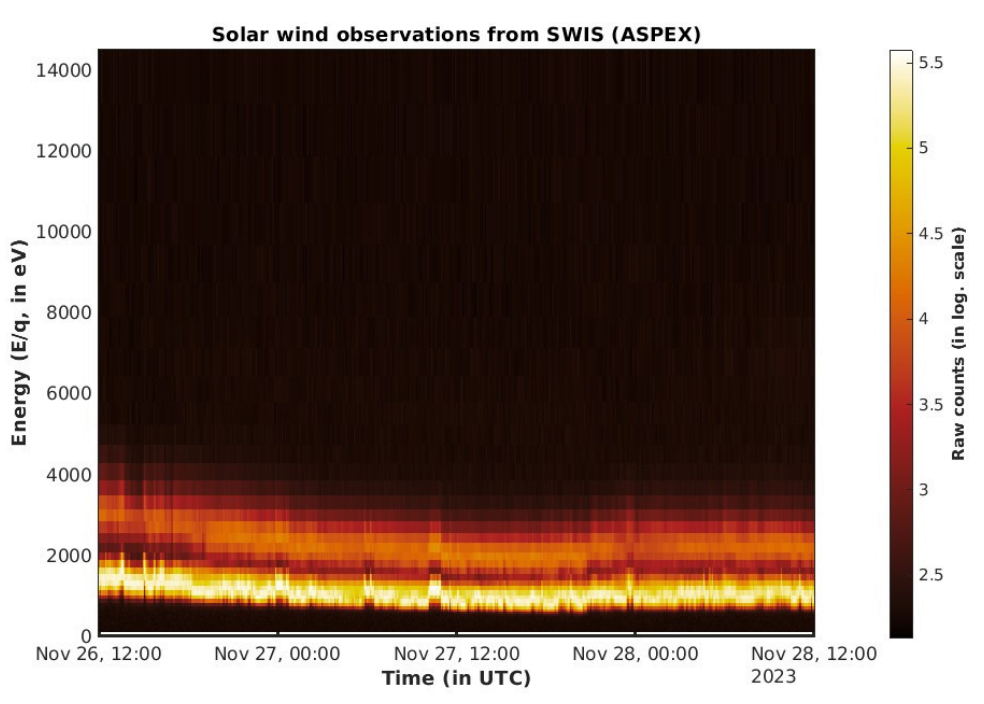
SUIT payload captures full disc image of SUN ( 8 December 2023)
Aditya L1 status: The Solar Ultraviolet Imaging Telescope (SUIT) instrument, installed on the Aditya-L1 spacecraft, has achieved a milestone by capturing full-disk images of the Sun within the 200-400 nm wavelength spectrum (near ultraviolet wavelengths). SUIT employs a range of scientific filters to acquire images of the Sun’s photosphere and chromosphere in this specific wavelength range.
The SUIT payload was activated on November 20, 2023. After a successful pre-commissioning phase, the telescope recorded its inaugural scientific images on December 6, 2023.
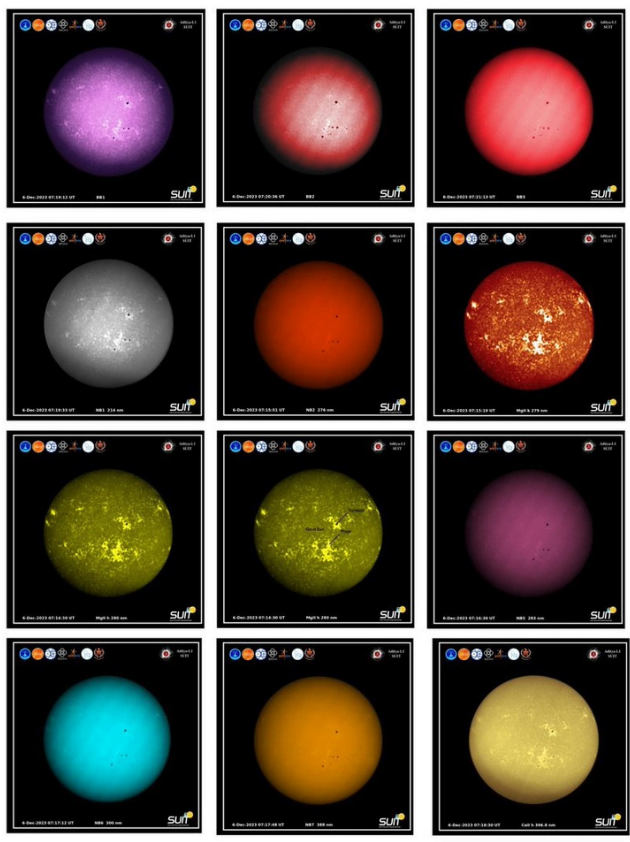
PAPA (Plasma Analyser Package for Aditya) switch on (8 December 2023)
The Plasma Analyser Package for Aditya (PAPA) installed on the Aditya-L1 spacecraft serves as an energy and mass analyzer payload designed to observe the flux of solar wind electrons and ions. It comprises two sensors: the Solar Wind Electron Energy Probe (SWEEP) for electron flux monitoring and the Solar Wind Ion Composition Analyser (SWICAR) for analyzing ion flux.
To assess the in-orbit condition, the payload underwent its initial activation on November 8, 2023, at 10 hours during the cruise phase. Notably, the high voltage (5 kV) was not enabled during this cruise phase. The functionality of the payload was tested using both the primary and backup DC-DC converters. Throughout the cruise phase, the PAPA payload’s electronics remained consistently activated. The 127 datasets obtained during this period were carefully analyzed at the Payload Operation Centre located at the Space Physics Laboratory, VSSC.
ISRO is planning to switch on the high voltage (5 kV) for the first time on December 11, 2023, and ISRO will be doing it gradually, step by step while keeping a close eye on all the parameters to ensure everything is monitored carefully.
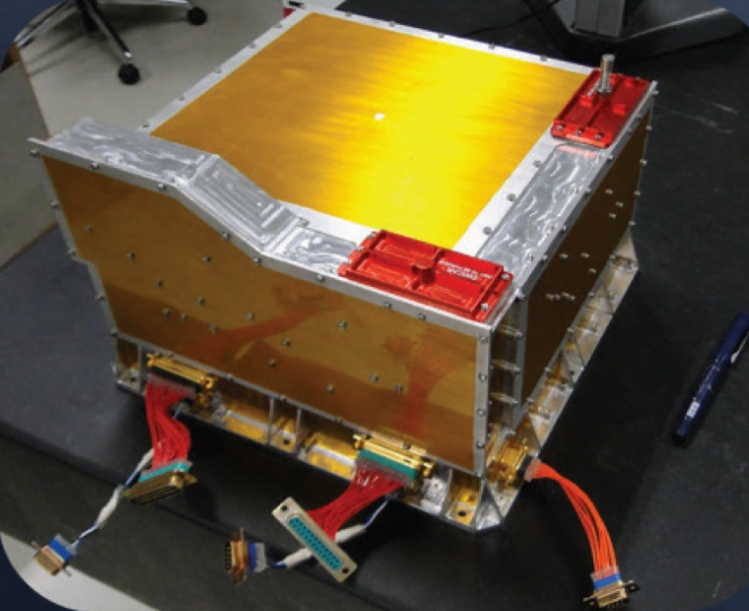
Last Manuever of Aditya L1 (Aditya L1 reached halo orbit around L1 point on 6th January 2024)
Aditya L1 status: Following a 127-day journey since its launch on September 2, 2023, the Aditya L1 spacecraft achieved a milestone by entering a halo orbit around the L1 point at 4:17 PM IST on January 6, 2024. During this momentous occasion, the spacecraft executed its final burn, flawlessly performing the L1 insertion maneuver with the activation of its thrusters.
you can read What Is The Lagrange Point L1, Where Aditya L1 Has Been Positioned?
Positioned in a halo orbit around Lagrange 1 (L1), approximately 1.5 million kilometers or 15 lakh kilometers from Earth, Aditya L1 is slated to remain in this orbit for the next five years. Joining it in the halo orbit are four other operational probes. Notably, three of them are exclusively from NASA: WIND, Advanced Composition Explorer (ACE), and Deep Space Climate Observatory (DSCOVR). The fourth, the Solar and Heliospheric Observatory (SOHO), is a collaborative effort between NASA and the European Space Agency (ESA).
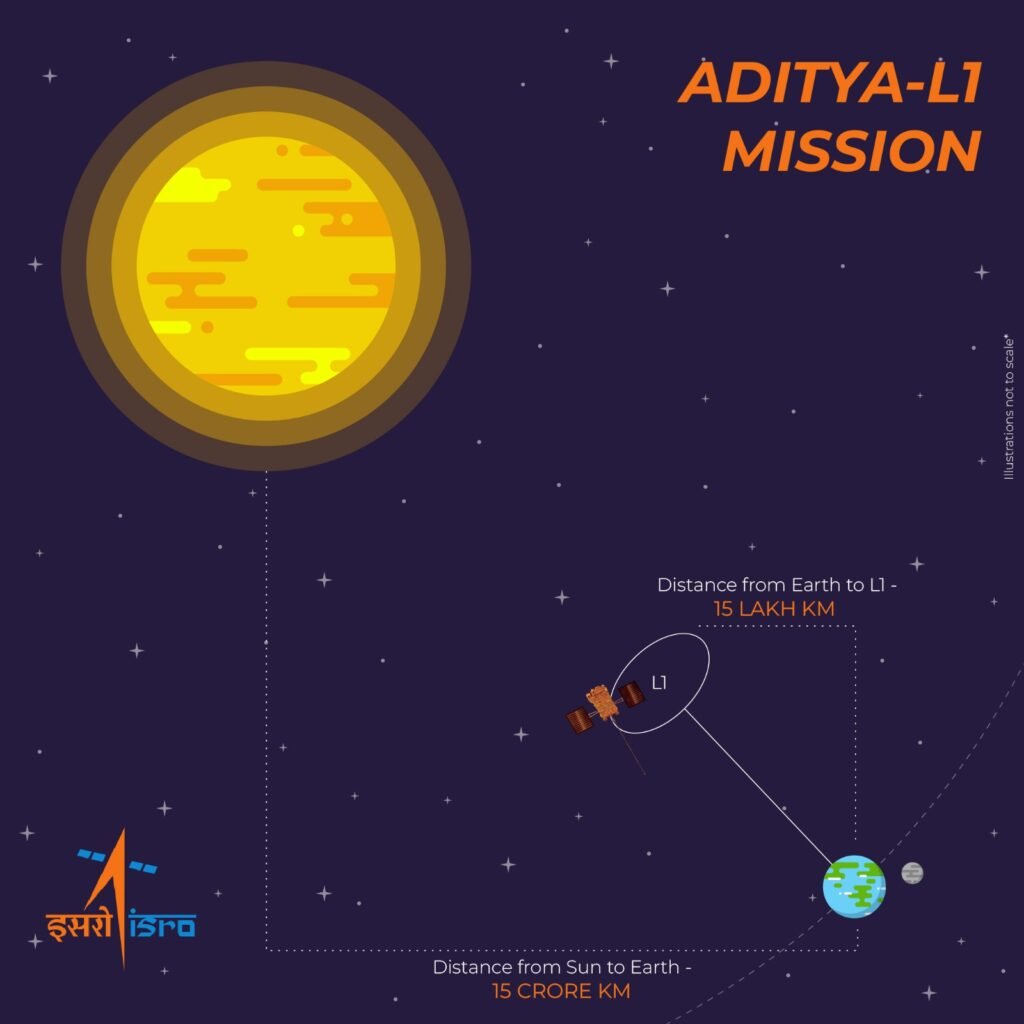
Read also Nigar Shaji: Meet the Muslim Women Scientist Behind The Success of Aditya L1
Status on 7th January 2024
As of January 7, 2024, Dr. Somanath reported that the Aditya-L1 spacecraft holds approximately 100 kilograms of remaining fuel. To sustain operations for five years at L1, the spacecraft requires around 60 kilograms of fuel. Nevertheless, the mission’s duration beyond the initial five years is contingent on various factors, including the health of the payload.
Status on 9th January 2024
PAPA Payload Fully Operational
The PAPA (Plasma Analyser Package for Aditya) payload aboard Aditya-L1 is currently operating at its full capacity of 5Kv and has commenced the transmission of high-quality data. On December 8, 2023, “PAPA” was activated for the first time during the cruise phase, with a duration of only 10 hours.
During the cruise phase, the functionality of the PAPA payload was tested to evaluate its in-orbit condition, both the primary and backup DC-DC converters were used in the assessment.
ISRO is planning to switch on the high voltage (5 kV) for the first time on December 11, 2023, and ISRO will be doing it gradually, step by step while keeping a close eye on all the parameters to ensure everything is monitored carefully.
You can read more details about the PAPA payload in the above paragraph of this article.

Aditya L1 Update on 11 January 2024
Magnetometer Boom Deployed on the Aditya L1 Satellite
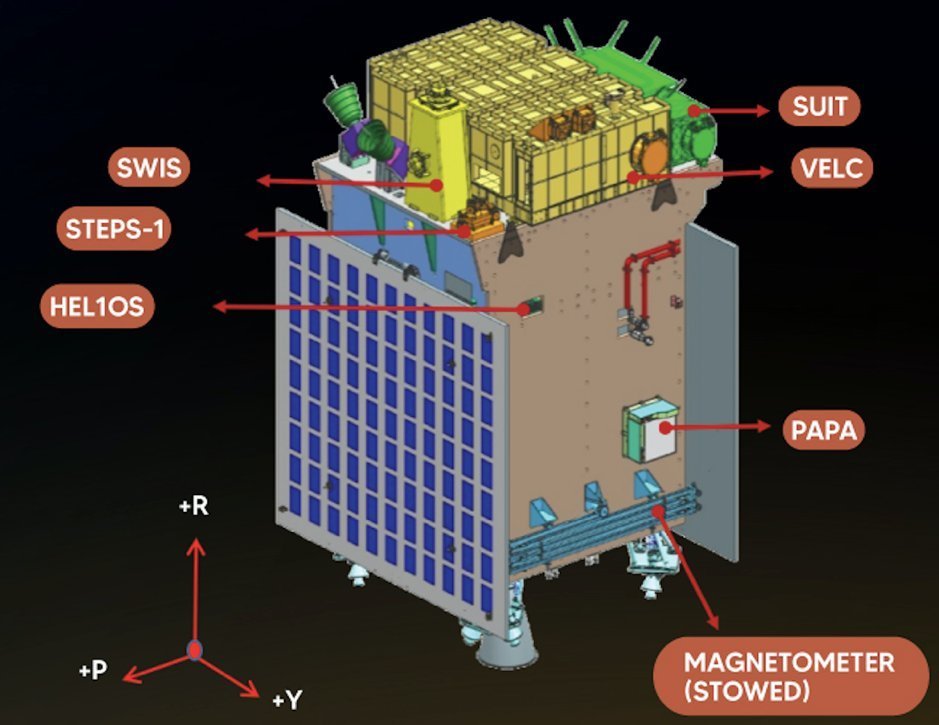
The magnetometer boom, which is 6 meters long, has been successfully deployed on the Aditya-L1 satellite. This boom had been in a stowed condition for 132 days since the launch of Aditya-L1. Its deployment took place in the Halo orbit at Lagrange point L-1 on January 11, 2024.
The boom is equipped with two advanced fluxgate magnetometer sensors that boast high accuracy. These sensors are positioned at distances of 3 and 6 meters from the spacecraft body and are designed to measure the low-intensity interplanetary magnetic field in space. Stay connected for Aditya L1 status.
Aditya L1 Update on 23 February 2024
PAPA Payload Sending Data
The Plasma Analyser Package for Aditya (PAPA) payload on Aditya-L1 became operational in December and has been functioning as expected. Its sophisticated sensors have effectively identified the effects of coronal mass ejections (CMEs), including those occurring on February 10-11, 2024.
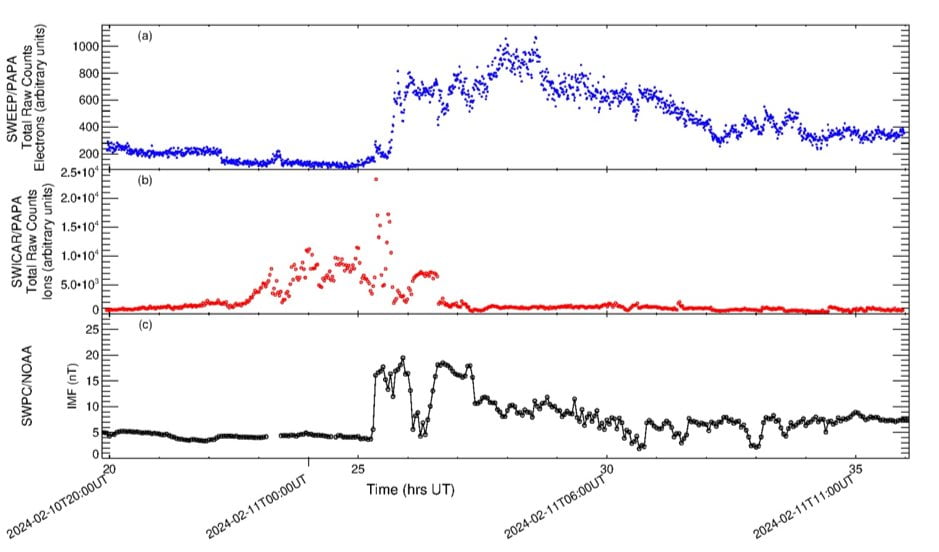
SUIT instrument aboard the Aditya L1e observe solar flare on December 31
Read in detail Aditya L1 Update! Magnetometer Sensor of Aditya L1 Deployed
To be continued….. stay in orbit for the latest update……
Read also Indian Space startup building fuel station in Space!

